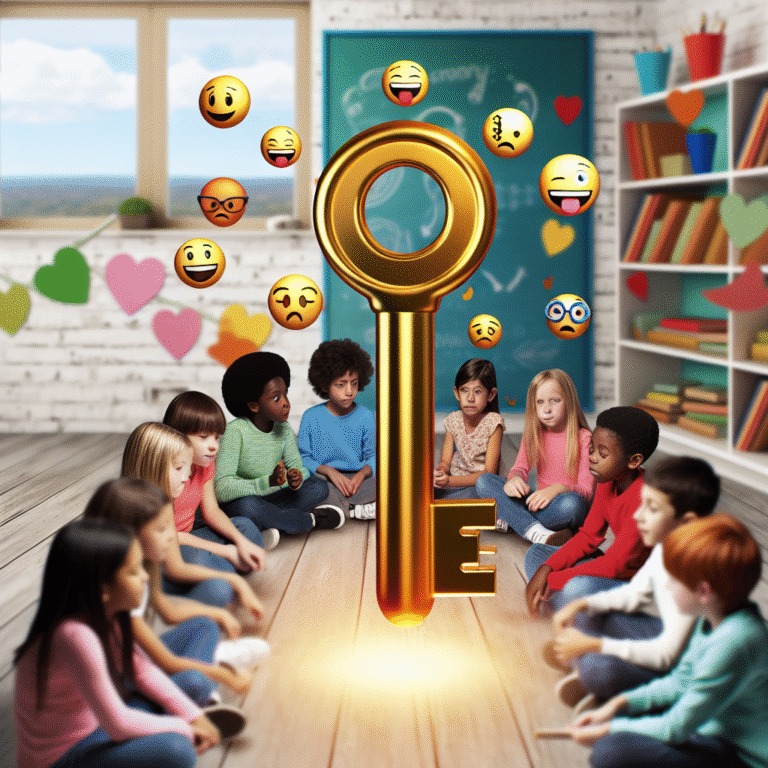
Recognizing Toxic Patterns: A Guide to Identifying Emotional Manipulation
Introduction
In today’s fast-paced world, relationships are the cornerstone of our emotional well-being. However, not all relationships foster healthy interactions. Understanding how to navigate the labyrinth of human emotions is essential for personal growth and mental health. This article, Recognizing Toxic Patterns: A Guide to Identifying Emotional Manipulation, aims to equip you with the tools and insights needed to recognize harmful behaviors, foster productive communication, and cultivate healthy connections. Emotional manipulation can masquerade in many forms, often being subtle and insidious, making this topic more crucial than ever.
What Is Emotional Manipulation?
Emotional manipulation is a covert tactic employed by individuals to influence and control others for their own gain. It often involves guilt-tripping, gaslighting, or playing the victim to create a sense of obligation or confusion in the other person. Understanding the foundations of these toxic patterns is the first step in recognizing and combating them.
Case Study: The Guilt Trip
Imagine Sarah, a dedicated employee who constantly helps her coworkers, often at her own expense. Recently, her colleague, Mike, began blaming her for not helping him with a project. Despite Sarah juggling multiple tasks, Mike’s antics left her feeling guilty and responsible for his shortcomings. Here, Mike’s behavior exemplifies emotional manipulation through the use of guilt, revealing a toxic pattern that can erode Sarah’s self-esteem.
Table 1: Common Forms of Emotional Manipulation
| Type of Manipulation | Description | Example |
|---|---|---|
| Guilt Tripping | Making someone feel responsible | "If you really cared, you’d help me with this." |
| Gaslighting | Creating doubt in one’s reality | "You’re overreacting; that never happened." |
| Playing the Victim | Seeking sympathy | "I’m always the one who gets hurt in this situation." |
| Silent Treatment | Refusing to communicate | Ignoring someone to manipulate their behavior. |
Why Is Recognizing Toxic Patterns Important?
Recognizing toxic patterns is crucial for several reasons:
- Mental Health: Identifying emotional manipulation can lead to healthier relationships and improved mental well-being.
- Self-Protection: Understanding these patterns equips you with the tools to safeguard yourself against emotional harm.
- Personal Growth: Recognizing harmful dynamics enables you to learn from experiences, fostering resilience.
The Impact on Mental Health
Emotional manipulation can lead to anxiety, depression, and a diminished sense of self. For example, in a romantic relationship where one partner consistently undermines the other’s confidence, the results can be devastating. Recognizing this toxic pattern is essential for breaking free and regaining personal strength.
Case Study: The Relationship Cycle
Consider Jane, who found herself in a toxic relationship with Tom. Initially, Tom appeared charming and attentive. However, as time passed, he began belittling her achievements and isolating her from friends. Jane’s self-worth diminished, leaving her emotionally drained. By recognizing these toxic patterns, Jane eventually sought help and found a supportive community that helped her rebuild her confidence and establish healthier boundaries.
Identifying Toxic Patterns
Now that we understand the importance of recognizing toxic patterns, let’s explore practical ways to identify emotional manipulation in various types of relationships.
1. Trust Your Instincts
One of the most powerful tools in recognizing toxic patterns is intuition. If you consistently feel uneasy or confused in a relationship, it may be time to examine the dynamic more closely.
Tip: Journaling your feelings can help clarify your experiences and make toxic patterns more evident.
2. Observe Communication Styles
Pay attention to communication styles in your relationships. Toxic manipulators often deploy vague language, sarcasm, or defensiveness to avoid accountability.
Analysis: Recognizing how someone communicates can provide insight into whether their intentions are genuine.
3. Establish Boundaries
Healthy relationships maintain clear boundaries. If someone continuously violates your limits, it could signal emotional manipulation.
Case Study: The Boundary Violation
Emily, a graphic designer, often found her colleague Danny consuming her time with endless requests for help. Although Emily initially enjoyed assisting Danny, she soon realized his demands overshadowed her own work. After setting clear boundaries about her availability, Danny attempted to guilt her into compliance. Recognizing this toxic pattern allowed Emily to reclaim her time and energy.
Strategies for Combating Emotional Manipulation
1. Communicate Openly
Engaging in transparent discussions can disarm emotional manipulators. Express your feelings and intentions clearly. This approach leaves less room for misunderstandings.
2. Seek Support
Lean on friends, family, or professionals when facing emotional manipulation. Their insights can help validate your feelings and strategies for addressing harmful dynamics.
3. Practice Self-Compassion
Recognize that you deserve healthy, supportive relationships. Treat yourself with kindness and reshape negative self-beliefs instilled by emotional manipulators.
Table 2: Healthy Communication Techniques
| Technique | Description | Example |
|---|---|---|
| "I" Statements | Express feelings without blaming | "I feel upset when you ignore my opinions." |
| Active Listening | Validate others’ feelings | "I understand that this is important to you." |
| Clear Boundaries | Define personal limits | "I can help you with one project this week." |
Conclusion
In the journey of understanding emotional manipulation, Recognizing Toxic Patterns: A Guide to Identifying Emotional Manipulation equips you with crucial tools for personal empowerment and improved relational health. By acknowledging the signs of emotional manipulation, you can protect yourself and foster healthier interactions. Always remember that recognizing these patterns is the first step toward breaking free and reclaiming your emotional well-being.
FAQs
1. How can I tell if someone is emotionally manipulating me?
Look for signs such as feeling guilty for asserting your needs, experiencing self-doubt because of someone’s comments, or noticing patterns of inconsistency in their behavior.
2. Is emotional manipulation always intentional?
Not always. Some individuals may engage in emotionally manipulative behaviors unconsciously. However, recognizing the impact of their actions is crucial.
3. How can I confront someone who is emotionally manipulating me?
Use "I" statements to express your feelings while being calm and direct. For example, “I feel uncomfortable when you dismiss my opinions.”
4. What if the manipulator is a close family member?
At times, confronting a family member may require sensitivity. Seek a trusted friend or professional for guidance on navigating this complex dynamic.
5. How can I rebuild my self-esteem after emotional manipulation?
Focus on self-care activities, practice positive affirmations, and surround yourself with supportive individuals who respect your boundaries and promote your well-being.
By recognizing toxic patterns, you take charge of your emotional health. Use this guide to foster awareness in your relationships, ensuring that they are built on mutual respect and understanding. Share this knowledge with others, as spreading awareness can empower others to recognize and address emotional manipulation in their lives.

















